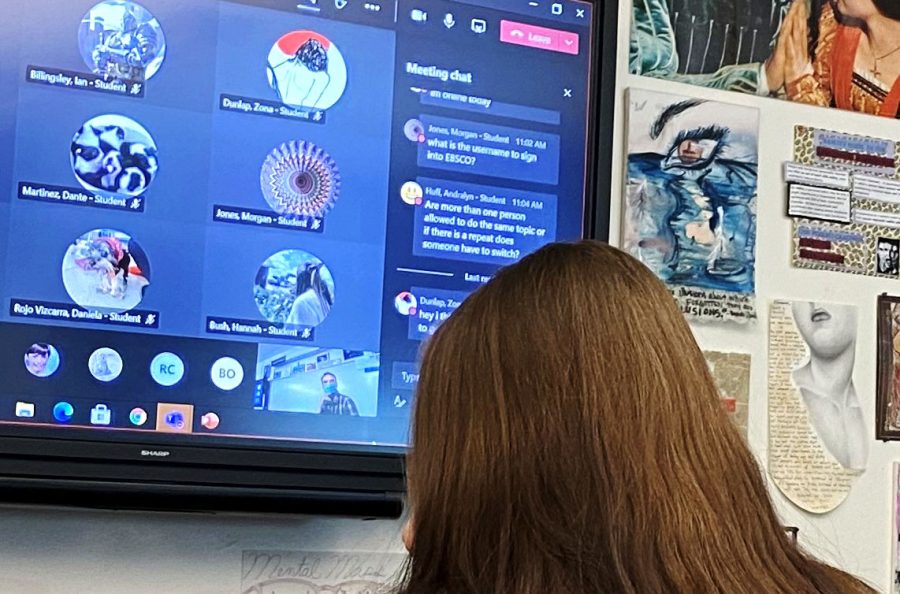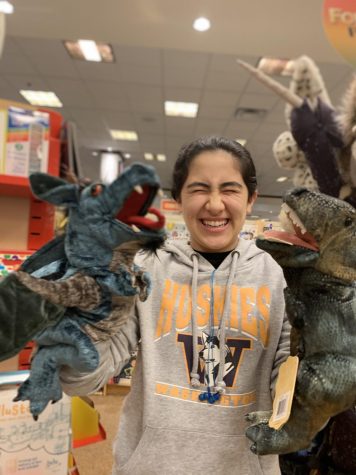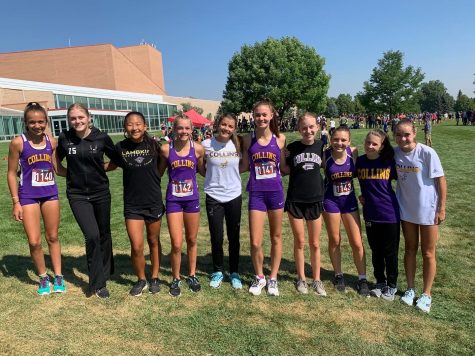Remote learning creates gap in student-teacher relationships
Students in AP Language and Composition engage with Language Arts teacher Jason Clarke in hybrid learning in the classroom and on the screen on Nov. 19.
November 18, 2020
Nearly 93 percent of students in the United States are in school virtually due to the COVID-19 pandemic, according to the U.S. Census Bureau. Many of these students and their teachers have become used to opening their laptops, joining online classes, watching faces appear on screen, and working through assignments or lectures as class time goes by.
Although many students are accustomed to staring at a screen, online learning is not the same as scrolling through TikTok or playing “Among Us.” The screens that usually feature TV shows, YouTube videos, games and social media have now turned into classrooms, rehearsal rooms and study halls.
As Poudre School District prepares to respond to rising numbers of COVID-19 cases in Larimer County, the return to remote learning brings with it worries related to keeping students engaged.
According to Kangan Institute, one of the top reasons teachers choose teaching is to make a difference in students’ lives, by connecting with them in ways that support students and inspire them to learn.
“Everyone gets into this job because they like working with kids and they like building relationships with them,” Social Studies teacher Nick Baltzell said.
As virtual learning progresses, teachers are experiencing complications in making connections with students.
“There’s something about in-person teaching, and having everyone in the same room that you can pick up on a lot of their personalities, but also nonverbal communications as well,” Baltzell said.
The ability to communicate effectively is crucial in learning. According to a review of educational research done by Education Week, data from 46 studies showed that strong student-teacher relationships improved many aspects of education, such as higher student academic engagement.
“Once they know I care, they’ll go anywhere with me and that’s why we do Tai Chi and we’ll do yoga and we do all sorts of wacky things in my classes because they trust me,” Social Studies teacher Elaine Holmes said. “They know that I care and you can’t do that with every kid, some kids’ walls are up.”
In the remote setting, technology creates a physical barrier teachers find challenging.
“A number of my kids, when they sign on to class they don’t turn their camera on, and unless I directly speak to them I never even hear their voice,” Baltzell explained. “So I just see their profile picture for Microsoft Teams and their name and that’s it. And so, in my mind, I feel like at this point of the school year I usually know or will feel like I know a majority of my students, and right now I feel like I’m not anywhere close to how well I’d like to know them.”
Beyond academic engagement, a teacher’s ability to get to know a student also opens avenues for emotional and mental support. In remote education, it can become more difficult for students to ask for help with personal issues.
“If a kid’s feeling low, they kind of walk in differently and you can walk over to them and just be like ‘Hey what’s up are you OK?,” Holmes said. “Whereas if they walk into a virtual room and sit there with their camera off the entire period, it’s really hard to tell what’s going on behind the scenes so again that’s been probably my greatest challenge so far.”
Humans need social contact. Without it, mental health, emotional health and physical health can be impacted negatively. Currently, teachers are fighting to help students to learn, to see them grow, and to see their personalities, faces and smiles.
“Especially right now I’m like, ‘Please just give me something,’” Baltzell said. “I need to know who you are.”



